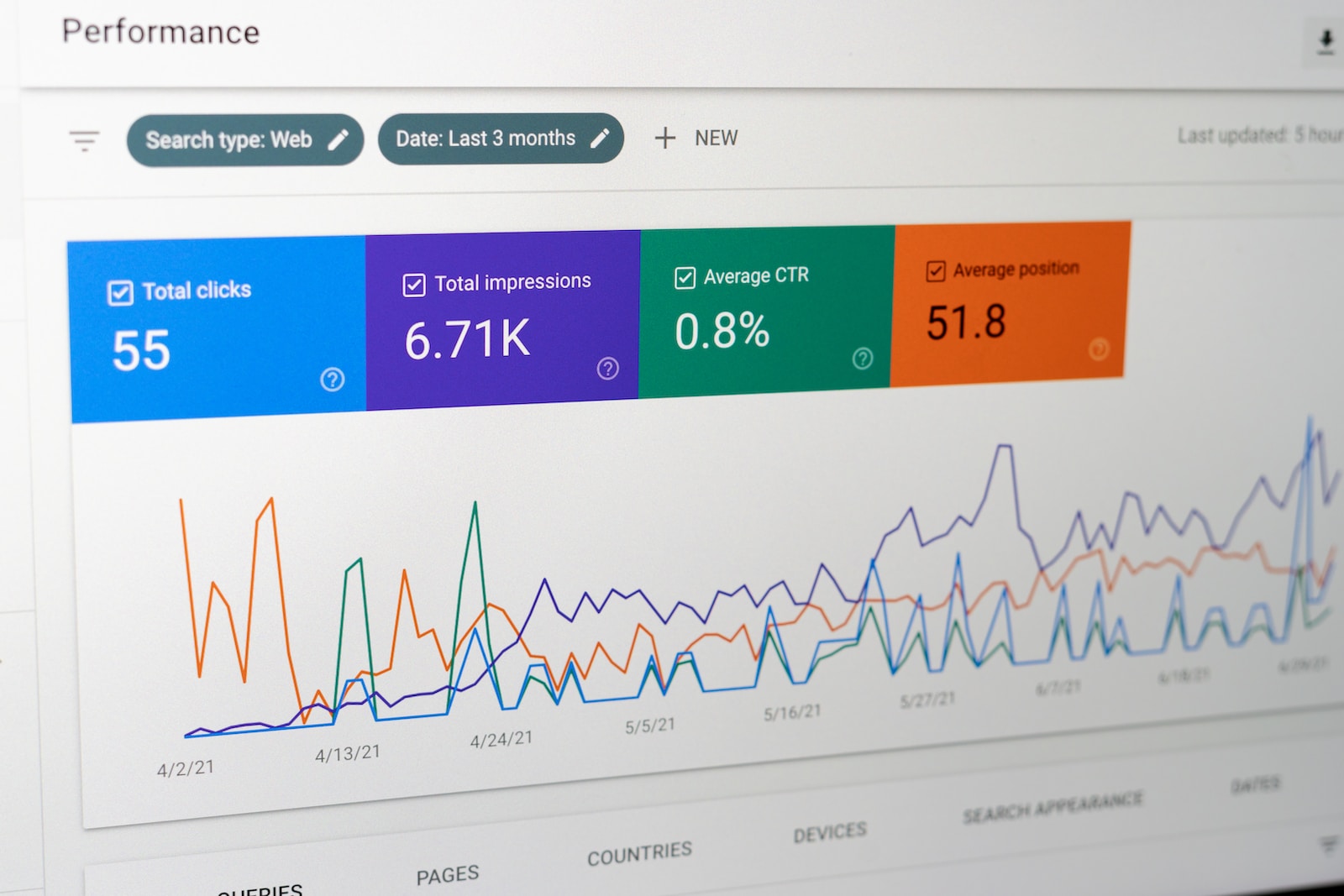What is a good impressions click through rate? Are you looking for ways to increase your impression click through rate? Many businesses struggle to capture the attention of their target audience and create conversions. Fortunately, there are a few simple strategies that can help you boost your impression click through rate. In this article, we will discuss how to identify your target audience, create relevant content, and optimize your website for a higher click through rate.
What Is A Good Impressions Click Through Rate?
A good impression click through rate (CTR) is an important metric for any website or online business. It is a measure of how many people are clicking on a link or advertisement. And it can help you gauge the effectiveness of a website’s marketing efforts. A good CTR is essential for any website that wants to increase its visibility and attract more customers.
A good CTR is generally considered to be between 1-2%, though this can vary depending on the industry. There are several ways to improve your CTR, such as optimizing your website for search engines, making sure it is easy to navigate, and using targeted advertising. With the right strategies in place, you can ensure that your website has a high CTR and attracts more customers.
How to Calculate Impressions CTR
Now that you understand what impressions CTR is, it’s time to calculate it for your own business. This can be done in a few simple steps:
- Divide the number of impressions by the number of clicks. This will give you your impressions CTR.
- Multiply this number by 100 to get a percentage. This is your impressions CTR percentage.
- Compare this percentage to other businesses in your industry to see how you stack up. If you’re lower than the industry average, consider tweaking your ad copy or targeting to see if you can improve your results.
What’s Considered a Good CTR?
CTR, or click-through rate, is a metric that tells you how often people who see your ad actually click on it. It’s one of the most important indicators of an ad’s success, and can help you determine whether or not you need to change your strategy.
Ideally, you want your CTR to be as high as possible. Generally speaking, anything over 1% is good, while anything over 3% is excellent. A lower clickthrough rate isn’t good for business.
However, there are a few things to keep in mind when it comes to CTR. For starters, it’s important to remember that your results may vary depending on your industry and the type of ad you’re running.
Additionally, you need to make sure that you’re tracking the right data. Click-through rate is just one piece of the puzzle; it’s also important to look at things like conversion rate and ROI in order to get a complete picture of your advertising success.
Factors That Affect Impressions CTR


There are a few factors that can contribute to the impressions click through rate. Let’s unpack them so you can get a better understanding of what’s happening.
The most obvious factor is the quality of the ad itself. If your ad is engaging and eye-catching, people will be more likely to click on it. Other factors include the relevance of the ad, its placement on the page, and how well it’s tailored to its audience. Relevance is especially important when people are seeing thousands of ads per day. Ads should also be placed in places where they won’t be overlooked, like in prime positions and at the top of search engine results pages.
Finally, it helps if your ads are tailored specifically for their target audience, which helps increase engagement and click-through rates. This means identifying who you want to reach with your ad and creating content that resonates with them.
Optimizing Your Ads for Improved CTR
One of the keys to increasing your impressions click through rate is optimizing your ads. Here are a few tips to help you improve your ads and get better results:
- Make sure your ad copy is relevant to the product or service you’re offering. Use words and phrases that will resonate with your target audience and draw them in to click.
- Utilize A/B testing so you can compare different versions of an ad to figure out which one performs best. This can help you identify what’s working and what’s not so you can adjust accordingly.
- Finally, focus on creating an effective call-to-action (CTA). Your CTA should be clearly defined and provide a sense of urgency that will encourage people to take action right away.
By taking the time to tweak and refine the details of your ad, you’ll be able to increase its effectiveness and drive more clicks on each impression.
Monitoring Your CTR to Improve Performance
When it comes to monitoring your CTR, it’s important to keep a close eye on the performance of your campaigns. You’ll want to get a sense of how much people are engaging with your ads, and by keeping track of your CTR you can easily see what works and what doesn’t.
By tracking your CTR over time, you can identify trends and where you might need to tweak things. Try running experiments with different placements and formats so that you can compare their results and optimize the performance of your ads.
Additionally, by keeping an eye on the click-through rates of impression campaigns, you can quickly identify any potential issues or areas in need of improvement. If your click-through rate is too low, it could be a sign that something needs to change in order to drive more clicks (and conversions). It could also be a sign that you’re targeting the wrong audience or using the wrong messaging. Monitoring your CTR will allow you to identify issues quickly and make changes quickly too!
Potential Problems With a Low Impression Click Through Rate
A low Impressions Click Through Rate (ICTR) can be caused by a few factors, and in order to fix it you need to take a closer look at the issue. For example, if the issue is related to an ad’s relevance, it could be due to targeting or creative elements that are not resonating with the target audience. It could also be because of messaging or presentation of your product.
Another potential problem is poor copywriting that fails to convey a clear message. If users don’t understand what your ad is offering, they won’t click through. Additionally, check whether you’re using too many images or videos which might slow down the loading time and discourage people from clicking. Make sure your visuals are fast loading and relevant to your offer.
Lastly, you may have too many campaigns running at once so take stock and prioritize campaigns that are performing well over those that aren’t getting clicks. Thoughtful optimization and testing can help you get back on track with better CTR rates!
How to Improve CTR
There are several ways to improve your CTR. One of the most effective methods is to optimize your website for search engines. This means making sure that your website is properly indexed by search engines and that it contains relevant keywords and phrases.
Additionally, you should make sure that your website is easy to navigate and that it contains compelling content that will encourage visitors to click on links and advertisements. Finally, you should use targeted advertising to reach the right audience and ensure that your ads are seen by the people who are most likely to click on them.
5 Ways to Get Good Impressions Click-Through Rate


When it comes to getting good impressions click-through rate, there are several steps that you need to take. Let’s discuss them in detail.
Choose the best keywords for your ad
The first step to getting good impressions click-through rate is to choose the best keywords for your ad. Choose keywords that are relevant to your business. For example, if you’re running an electronics store, search for “electronics store” or “electronics repair.” If you sell jewelry and accessories, try searching for phrases like “jewelry and accessories” or even just one word: “jewelry.”
Choose keywords that are relevant to your audience. This can be more difficult than it sounds because people come from all walks of life—and they speak different languages! To get them on board with what kind of content they want in their searches, it’s important to understand what types of things they care about when researching online.
Implement a solid bidding strategy
Your first step is to set up a daily budget. This will help you stay on track, while also providing an incentive for your team members to bid according to the strategy you have in place.
The next step is setting up a bidding strategy that works best for your site. There are several different strategies available:
- CPC – Cost per click (or cost per thousand impressions) – This type of bidding method involves paying for clicks on your ad or link when someone clicks it, instead of paying based on how many times the ad has been seen by users. It’s usually more expensive than other types of campaigns because there’s only one cost associated with it. The amount paid per click or impression. However, this can be beneficial if you know exactly what kind of audience would visit your site and how many people will see each message as part of their search query.
- CPM – Cost per thousand impressions (or cost per thousand views) – Also known as CPI or CVP, this method involves paying advertisers based on how many times their ads appear across all websites in Google Display Network (GDN). While this may seem like an easier way at first glance since no bid adjustment takes place during actual page views vs actual clicks being processed by advertisers’ computers. However, it complicates things significantly when considering multiple factors such as contextually relevant content versus irrelevant content which might lead users away from taking action after viewing something negative rather than positive overall impression score.
Use negative keywords
Negative keywords are words or phrases that you don’t want your ad to show on. They are typically used in order to target certain regions, industries, or even products. For example, if an auto insurance company wanted to show their ads only in the state of New York but didn’t want them anywhere else (except for international markets), they would use the term “New York” as a negative keyword for this purpose. This is a great insurance marketing tactic.
In addition to using negative keywords for targeting purposes—and there are many different ways of doing so—you can also use them for optimization purposes by using filters within AdWords Editor like “Ads grouped by:” and “Ads shown here.
Make sure your landing page is relevant
Make sure the landing page is relevant. Also, make sure that it’s easy to navigate. Have a clear call-to-action and value proposition for your audience. Show them what they get when they click on your ad, but don’t overwhelm them with too much information (don’t send them through a long process).
Create engaging ad copy
Make sure your landing page is relevant to visitors who are potential customers, not just prospects. Use negative keywords to exclude certain words from appearing in ad copy, so that you don’t waste money on ads that aren’t relevant to what people are searching for when they click through from an ad campaign or website landing page (i.e., “free shipping” won’t show up if someone searches “free shipping”).
Final Thoughts
In summary, increasing your impression click through rate can be done in a variety of ways, such as optimizing your ad copy, targeting the right audience, and testing different ad placements. With the right strategies and a bit of effort, you can significantly boost your click-through rate. The key is to experiment, track your progress, and adjust your strategies accordingly. With the right approach, you can make sure your impressions are being used to their full potential. What strategies are you using to increase your impression click through rate?





















Leave a Reply
View Comments